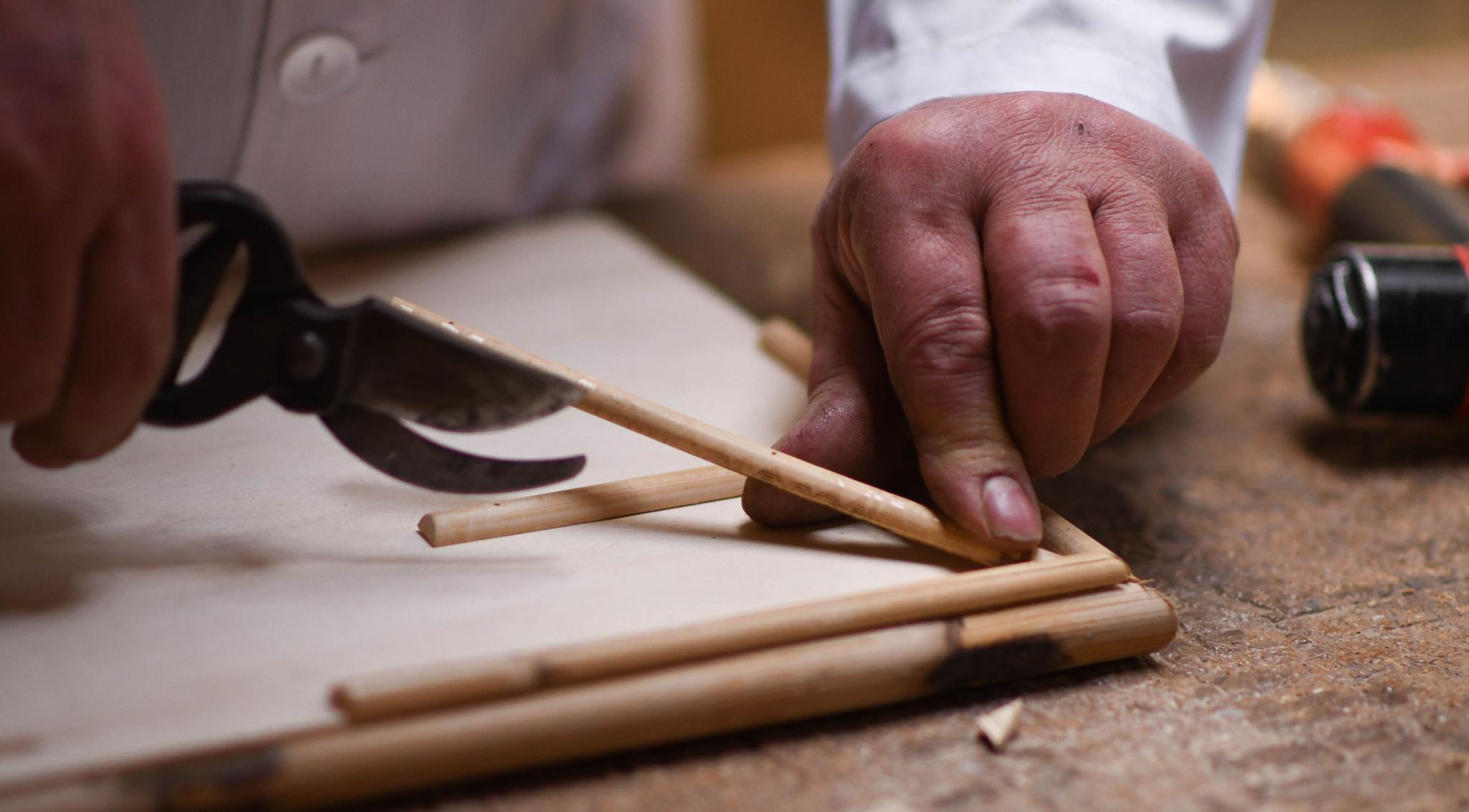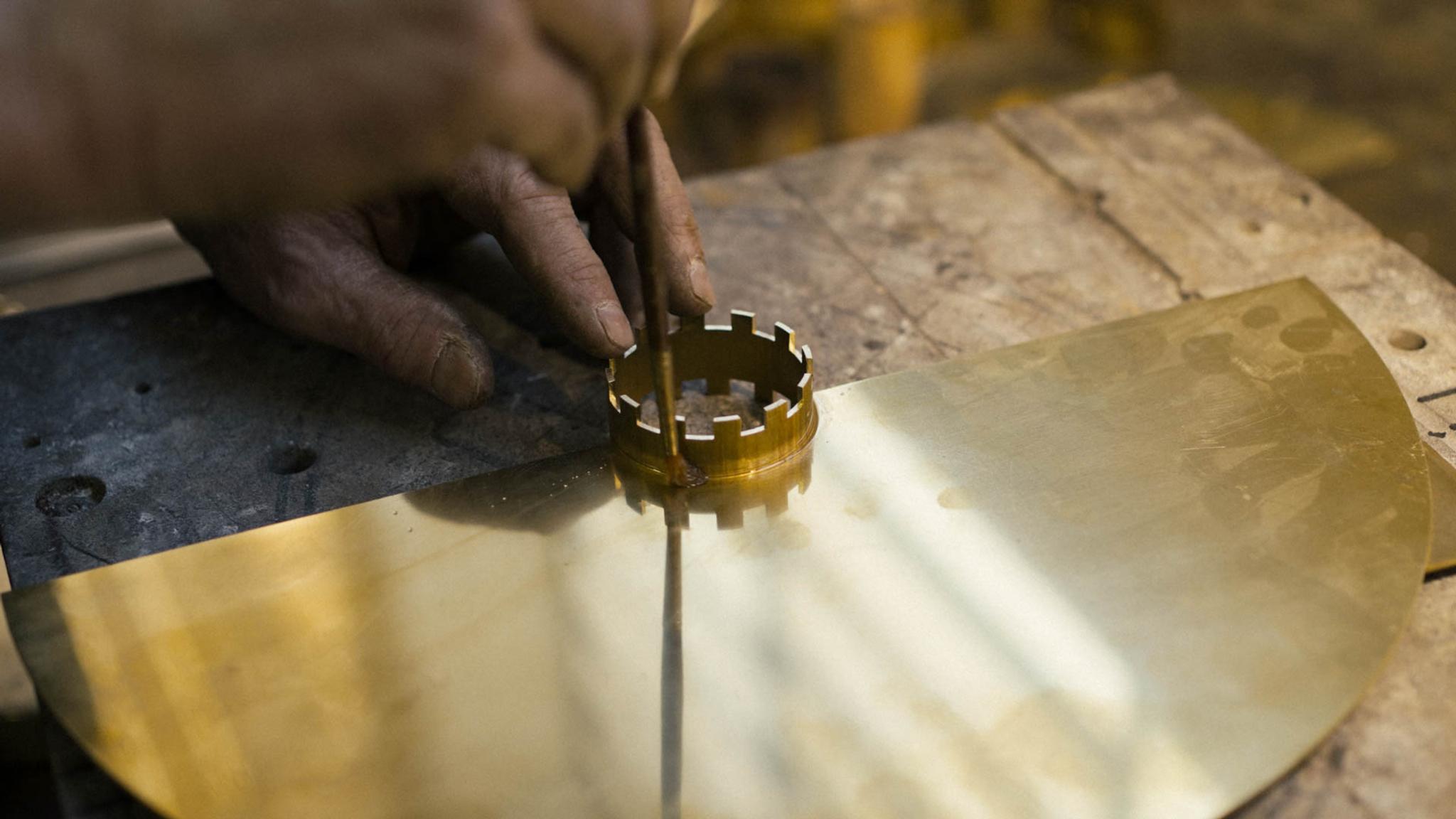
Stefano Robiglio
Inverno Sculpture
USD 7,380
Ships in 3-4 weeks

Meet Stefano Robiglio and discover the talent of this Piedmontese blacksmith. Born as a self-taught artisan, he turned his passion into a job, forging brutalist artworks and unconventional design pieces in his workshop. Explore the multiple facets of iron and the intricate artisanal process to transform matter into art.
The complexity of nature and the human psyche are the primary sources of inspiration for Stefano Robiglio's handcrafted pieces. Stefano has developed a superb technique and personal aesthetic made of contrasts — in some cases smooth and clean, in others rough and multifaceted — after a protracted journey of self-education to learn this craft. Cutting, sculpting, welding, forging, and polishing are just a few of the actions that result in his one-of-a-kind sculptures and designs, with strong artistic overtones, manifestos of the artisan’s introspection.
The material details and rough finishes of Robiglio’s works make each artifact real and completely artisanal, defining a kind of beauty without filters, interpreter of a truly manual craftsmanship. Here is how a material that is thought to be cold reveals its complex soul: when heated, metal comes to life and becomes soft and malleable before hardening again to capture the spirit of the artist. Learn more about the creative process behind Stefano Robiglio’s artworks.
Metal forging has always been your passion, developed over the years and later became your career. Tell us about your journey up until this point: how did this become your calling?
I would start by underscoring the fact that I am entirely self-taught, fueled by an innate passion of wanting to “build things". Wood and stone did not fully meet my needs; instead, with steel, it was instant magic. After high school, I spent about ten years working in the family refrigeration equipment business and, besides the usual parent-child misunderstandings, I had the opportunity to extensively practice welding iron, stainless steel, and copper. From that point on, it was a progression of small steps in my free time, during which I initially started to create my own tables, bookcases, small sculptures, and accessories. The consistent approach and the infinite possibilities offered by working with this metal contributed to rapid progress.
As such, six years ago I decided it was time to turn my passion into my own business, and, piece by piece, I started equipping my workshop and coming up with my own designs. At first, I did not receive much interest from the "public," so I decided to focus part of my energies on more traditional works such as gates, railings, and stairs, while always adding my personal touch. This allowed me to fund my more creative visions for design furniture and sculptures, although it is fair to say that I discovered the artistic part along the way, more so to prove to myself that I was capable of making certain kinds of products than out of any real vocation. However, the more I immersed myself in sculpting, the more I was able to communicate feelings and emotions that would have never emerged otherwise, always drawing inspiration from the beauty of nature and the complexity of the human soul.
Each one of your sculptures has a distinct personality, conveying a special message and embedding a unique aesthetic soul. What is the sculpture that most represents your work in all its different facets?
There is no easy answer to this question, as all my sculptures will always retain a part of me that I will never get back. Certainly, each one was conceived at a certain time and with a different purpose, but I could probably say that at this point in time "Dafne” is the one I am totally in tune with and that most encapsulates and highlights the essence of my work. It is my latest piece and the first one to be made entirely of stainless steel rather than iron: this choice is based primarily on the possibility of displaying it even in outdoor environments without the risk of corrosion. From a more emotional point of view, the concept of stainless steel evokes the idea of something eternal and endless by nature. What strikes you at first is the aesthetic aspect of its graceful and clean lines and, in some way, the shiny surface conveys modernity and uniformity.
The sculpture consists of more than four thousand tiles, each measuring about 2x2 cm: they are cut from metal sheets, shaped with hammers and pliers, and finally welded with an indissoluble bond, just like molecules that aggregate piece by piece to form more complex structures. I have used this technique also in other works because I find that it perfectly renders the infinite and diverse facets of the human soul: on the one hand, the metamorphosis into a plant (which is necessary in order to save oneself) highlights the extraordinary beauty, while on the other the greed and lust for possession (concealed under the shining surface). The theme inspired by Greek mythology is, in my opinion, very topical, and with this sculpture, I want to reveal the solemn concept that beauty is to be admired and respected, not possessed, whether we are talking about nature or human beings.
Metalworking is a complex art and the making of an object goes through multiple stages. Tell us how the composition of one of your sculptures came about, from conception to final production.
From the initial vision in my mind to the final product there is a continuous evolution and transformation. I do not have a definite design that I follow, nor a blind dedication to the pursuit of perfection; on the contrary, I find that imperfections reveal true beauty. That is why I adopt a totally "fluid" approach where the work evolves and changes back according to the need and the moment: transformation is always the key and the only certainty. Aesthetic profile and continuous research are my constant guidelines. I never feel bound to one style but I like to experiment with various techniques and different sculptural forms. After all, I believe that emotion comes before technique.
Some works are born out of the blue and in one go, from the vision to the chalk drawing on the workshop iron table and then straight into the forge. Others, however, take several months to be completed, going through various stages of fervor and moments when I question the entire project, only to return to it weeks later with new ideas and newfound enthusiasm. Cutting, shaping, welding, forging, and polishing are everyday gestures but they take on different forms and meanings each time, in some cases even unexpected, because beauty comes from diversity: this is what gives me the incentive to create new sculptures. Creating something is always strenuous and unfortunately, it is quite difficult to make people realize there are failures behind the final outcome.
Art and craftsmanship represent two complementary elements both in your sculptures and design furniture. Tell us how they interface and what is the philosophy behind your inspirations.
I firmly believe that art and craftsmanship interface in a visceral way. To give an example, sometimes I start to create a sculpture and later realize that it would be perfect as a piece of furniture: art does not remain confined only to something beautiful meant to be observed or to make people think, but it concretely performs a function in everyday life. The inspiration that unites all my creations is nature in all its forms: I love the textural details and rough finishes that make the piece feel real and totally handcrafted, thus defining a type of beauty without artifice or filters. Whether art or craft, the essence of the working process is the uniquely manual execution, without using industrial machinery or software. The craftsman is an artist and art is born from craftsmanship,an evolved form of art: this is a concept gallery owners and many artists do not share, but in order to best express one's ideas one must first know how to craft.
Iron is the hardest of metals, a material that comes alive in the hand of the artist and craftsman. Which features do you love most about it and which ones make the sculptural process more complex?
The most interesting aspect of steel is unquestionably the possibility of adding and removing material at almost any time. By adopting a mixed approach of traditional wrought iron techniques with forge, hammer, anvil, mallet, and other more modern techniques involving arc welding and plasma cutting, I’m able to work without following set patterns and make countless variations throughout the process. This material, considered humble and cold, actually conceals a soul rich in nuance and contrast. When heated, the metal comes alive and allows itself for a few moments to be shaped and, as it cools, it hardens, trapping forever the essence of the work. There are not only positive qualities, of course: the weight, great energy, and hardness of the steel make the process also arduous and sometimes taxing. Giving a sculptural quality to the shapes is further complicated by the fact that you cannot touch the scorching hot metal with your bare hands, which is why tools are essential to achieve the desired design.

Created by the skilful hands of Italian artisans and designers, Molto Collectibles pieces reinterp…

Guided by its motto “Stone meets light”, Matlight Milano combines different types of stone and mar…